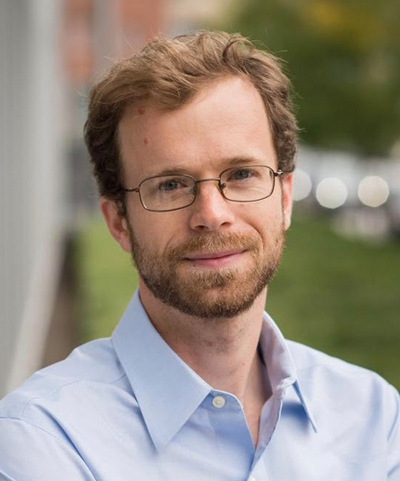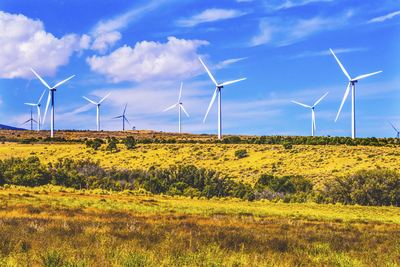More Power Grid Connectivity in Western U.S Could Supercharge Clean Energy
Greater coordination among states could save the region up to $3.25 billion per year in energy system costs
Story by:
Media contact:
Published Date
Story by:
Media contact:
Share This:
Article Content
A new study led by researchers at the University of California San Diego offers a first-of-its-kind look at how deeper coordination among Western U.S. states could lower the cost of decarbonizing the electric grid—and speed up the clean energy transition.
Published in the journal Nature Communications, the paper models how 11 Western states—including California, Arizona, and New Mexico—might build out clean energy infrastructure between now and 2050 under different climate policy scenarios and levels of power sector coordination.
“States that coordinate more closely could save billions—even if the climate policies among the various red and blue states do not align,” said Michael Davidson, the paper’s corresponding author who is an assistant professor at the School of Global Policy and Strategy and the Department of Mechanical and Aerospace Engineering at the Jacobs School of Engineering.

Breaking down the barriers of a fragmented power sector in the Western U.S.
Unlike most other parts of the country, the western United States is not operated by a single, unified power grid. Instead, electricity in the West is managed by a patchwork of utilities, state agencies and smaller regional markets that often work independently of one another.
Using a sophisticated computer model of the western grid, the authors explored what would happen given uncertainties of clean energy policies and levels of coordination—ranging from minimal to full integration.
“Most models assume states act in unison, but we wanted to test what happens when they don’t—and what benefits are left on the table when they go it alone,” said Davidson.
The researchers found that greater coordination among states could save the region up to $3.25 billion per year in energy system costs.
While cost differences across scenarios were modest as a fraction of total costs (a few percent), differences in where and what states build were much larger, with some states seeing 10% or greater shifts in solar, wind and battery deployment.
But even states without climate targets would benefit from coordination—especially by exporting clean energy to neighbors.
“Even if you’re in a state that doesn’t have a 100% clean energy goal, you can still benefit from cooperation,” said Davidson. “Nevertheless, optimal locations may shift across state lines if coordination is improved, which is important for states to know when making long-term plans.”
How does coordination impact California vs. the rest of the West?
California already has ambitious clean energy targets; however neighboring states from Utah to Wyoming have policies and politics that vary widely.
“For California, the message is simple,” said Davidson. “‘Working with your neighbors makes it cheaper and easier to hit your climate goals. And it doesn’t just mean joining a regional electricity market—it also means sharing generation plans, aligning clean energy standards and coordinating where we build power lines.’”
California policymakers are currently weighing whether to regionalize CAISO (the state’s electricity market operator), a move long debated but politically fraught.
“Regionalization has real political hurdles,” said Davidson. “California would give up some control of its grid. But the data show—it’s worth it.”
For Western states outside California, the benefits come from better planning. Most states will invest heavily in storage, renewables, and transmission regardless of climate goals. Shared planning for energy infrastructure such as new transmission lines can deliver meaningful benefits—even without total policy alignment.
For California, the message is simple: Working with your neighbors makes it cheaper and easier to hit your climate goals.

Coordination could lead to a more cost-effective, resilient clean grid
The study goes beyond typical power sector models by looking at five forms of coordination, from real-time energy sharing to long-term planning coordination for new power plants and transmission lines. It also considers both extensions of current policies and a hypothetical scenario where all states adopt 100% clean energy goals.
The authors conclude that with the West needing to build a massive amount of clean energy in the next 25 years to meet climate goals, how states build—and how well they work together—could make the difference between a smooth, affordable transition to a more messy, drawn out and expensive one.
“The barriers to regional coordination aren’t technical,” Davidson said. “They’re political. But if we want a cost-effective, resilient clean grid, we’ll need to start breaking them down—now.”
Coauthors include Fikri Kucuksayacigil, a former postdoctoral researcher at the School of Global Policy and Strategy and Zhenhua Zhang, a Phd student at the Jacobs School of Engineering.
Read the full study, “Coordinating power sector climate transitions under policy uncertainty.”
Learn more about research and education at UC San Diego in: Climate Change
Share This:
Stay in the Know
Keep up with all the latest from UC San Diego. Subscribe to the newsletter today.




